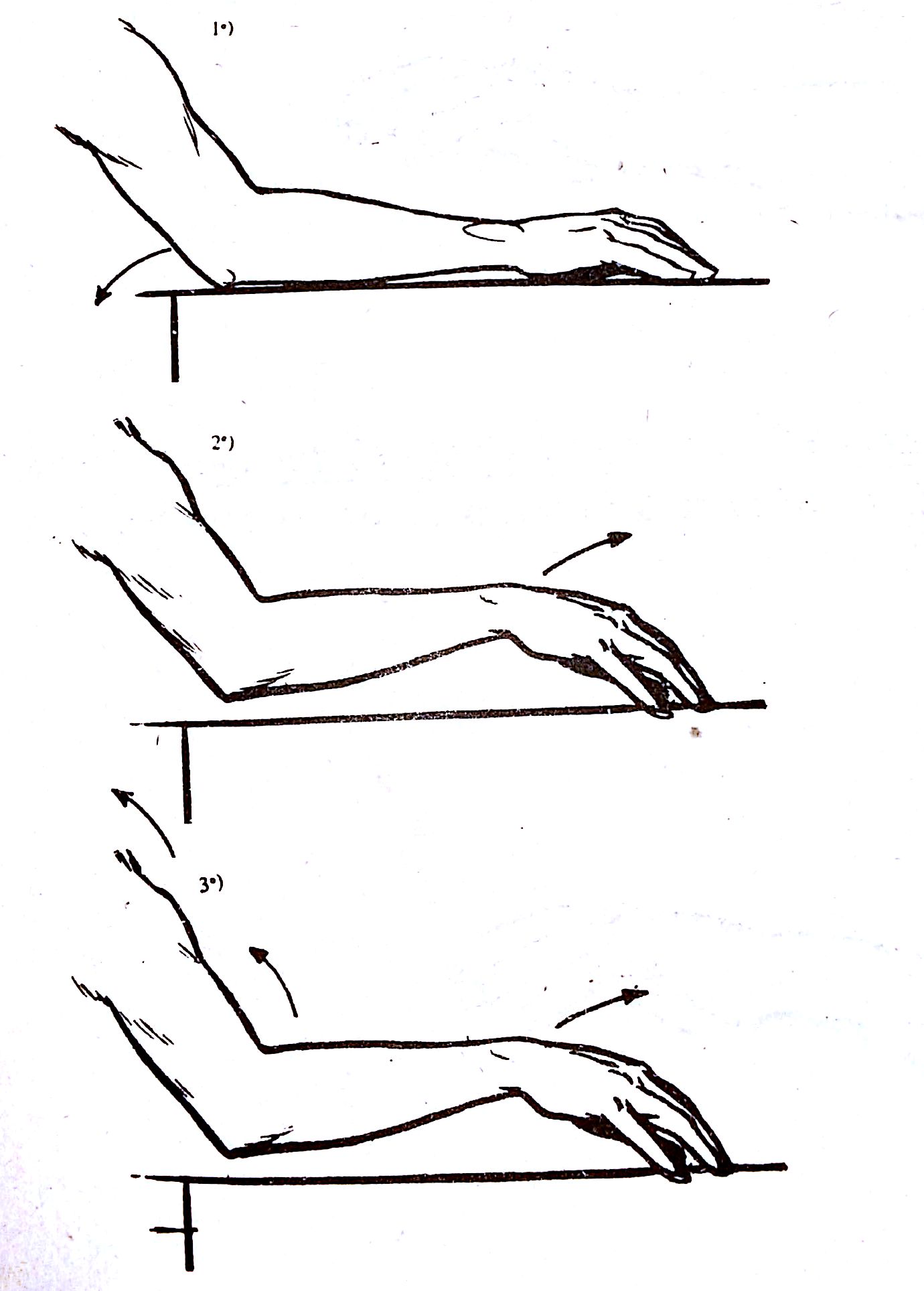Piano technique -EPE – Ch. 2 S.3
Piano Technique (V. SCARAMUZZA)
Piano Technique – It is impossible to remove what has not yet been settled. How could we lighten up our touch if we haven’t set the weight properly on the keyboard on the first place?
At the beginning of our training is advisable to try and direct the full weight of our arms to our fingertips, even exaggeratedly! In this way we make sure we learn and memorize this sensation properly.
To monitor if we are successfully relaxing our arms, we can try and see how hard is to flex the tip of our finger when it is firmly placed on a key. Security is fundamental when consolidating a good piano technique.
——-
NOTE: Later on we will refine the five different pianistic movements by altering the weight delivered to each terminal. For example, if we are using finger movement, we will lighten up the touch by lifting the forearm slightly using the biceps.
——-
Total relaxation is expressed through elbows that hung freely from the shoulders. At the beginning this way of managing weight will feel a bit uncomfortable at the fingertips. We will perfect this coordination to the point in which we can experience the purest version of this relaxation. This task will go on for the rest of our lives.
Many maestros put special emphasis in stating that correct-weight-placement happens when we do not abandon the hand entirely over the keyboard while we do not lift it too much. This ambiguity could be resolved by saying: “we are delivering the right amount of weight when we can fully manage it”. In other words, we are only well settled if we can have full and efficient control over the weight we direct to our fingers at all times and applying the minimum effort.
In general the most favorable piano position will be one in which we have shoulders a bit back-slided, the elbows hanging towards our torso and the omoplatos pointing inwards towards the spine. In this way the fingers will be able to action freely and strongly.
Perfecting a precise and dry action is the main contribution we can make towards defining and apprehending the right finger technique. We should only stress when launching the fingers towards the keys but never after they have reached them. We should relax as soon as the sound is produced. There are two different kinds of tension: the triggering one and the stand-by one. The finger should behave as a switch that is either on or off but never labours in between.
in spite of the fact we will focus around the articulative finger mechanism when we train, in the natural performance situation we will only monitor the feeling of “weight transference”. When at the beginning stages of learning this finger technique, we definitely need to study both positive (action) and negative (removal) movements. Only after we have confidently understood them is that we will move to focus on monitoring how we transfer smoothly the weight from one finger to the next one.
All we’ve mentioned before refers to the movement we use the most: finger movement. In spite of the fact that technique it is not the main objective of our pianistic studies, they are fundamental for the artist; otherwise we would find our devices insufficient to transmit our musical messages in the way we imagine them.



